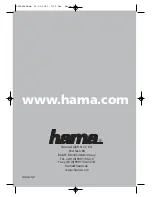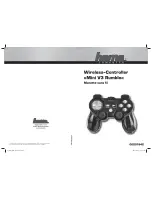
IOM-PGR-1
10
8. Apply pipe thread sealant to the body cap
(60.6) threads. Thread body cap into body.
When body cap is fully down against body
at the body cap shoulder, impact the body
cap into the body tight.
NOTE:
When unit is
put into service and pressurized, these two
parts seal metal-to-metal with no gasket.
9. Bench test unit for suitable operation.
NOTE:
Regulators are not tight shutoff de-
vices. Even if pressure builds up beyond set
point, a reg u la tor may or may not develop
bubble tight shutoff. In general, tighter
shutoff can be expected with composition
seat.
10. Pressurize with air and spray liquid leak
de tec tor to test around body cap (60.6)
and body (60.1) for leak age. Test pres sure
should be a mini mum of 100 psig (6.9 Barg)
at the inlet.
11. Remove body from vise, rotate down side
up and secure body in vise with body cap
down.
12. Reassemble diaphragm subassembly by
plac ing pusher plate seal (60.13) over
thread ed post of pusher plate (64), plac-
ing diaphragm (60.12) and pressure plate
(60.3) over the threaded post. Assure the
pressure plate (60.3) is placed with curved
outer rim down next to the diaphragm
(60.12) surface. Place a thread sealant
compound on the threads of push er plate
post (60.4). Apply 15 in-lbs. torque to tighten
the nut.
13. Place spring (60.15) over the pusher plate
nut (60.10) of the diaphragm subassembly.
14. Place multipurpose, high temperature
grease into de pres sion of spring button
(60.5) where ad just ing screw (60.8) makes
contact. (Also lubricate the threads of the
adjusting screw lightly).
15. Set spring but ton (60.5) onto range spring
(60.15); en sure spring button is laying flat
on top of spring.
16. Rotate the spring chamber (60.2) CW by
hand into the threaded portion of the body
(60.1) ensuring not to cross thread. Con-
tinue ro tat ing CW until firmly seated against
the upper di a phragm. Tighten to 30-35 ft-lbs
(41-47 N-m) torque value.
17. Rotate adjusting screw (60.8) CW into the
spring chamber (60.2) to where the nut
(60.11) comes in contact with the top of
the spring chamber. Stabilizer set pres-
sure should approach the set point prior
to removal from the piping installation.
Retighten nut (60.11).
18. Pressurize with air and spray liquid leak
de tec tor to test around body and spring
cham ber for leakage. En sure that an outlet
pressure is main tained during this leak test
of at least mid-range spring level; i.e. 20-80
psig (1.4-5.5 Barg) range spring, 50 psig
(3.4 Barg) test pres sure min i mum.
CALIBRATION -
If adjustments are necessary proceed with
the following steps:
1. Install a gauge in optional port down-
stream of stabilizer.
2. Establish flow as close to normal operat-
ing conditions as possible.
3. Set stabilizer 8 to 10 PSI above set point
(determined at time of order placement).
4. Adjust pilot to obtain desired P
2.
5. If downstream pressure is unstable,
adjust by rotating metering valve in 1/4
turn increments.
NOTE:
It is important
that 1/4 turn increments are used due
to sensitivity. The P
2
changes can be
significant in some cases.
6. Verify that external sensing is tubed to
tap closest to where control of pressure
is desired.




































